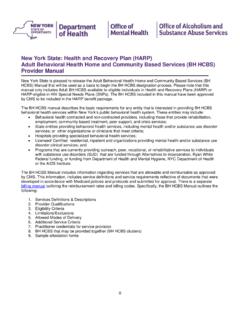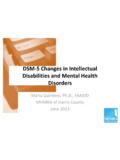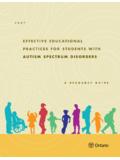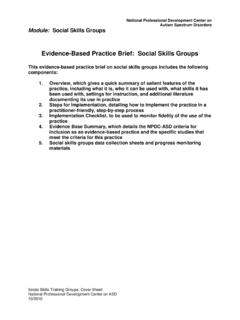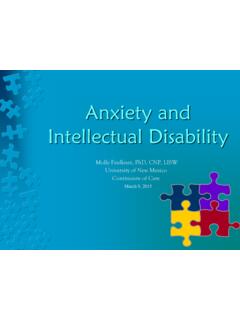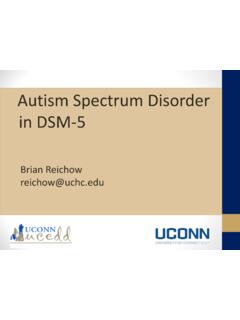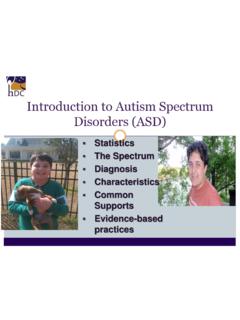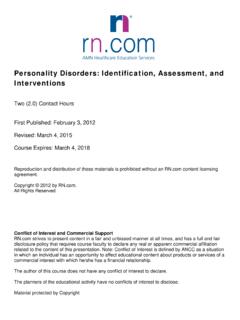Transcription of Overview of DSM-5 Changes
1 Overview of DSM-5 Changes Christopher K. Varley, MD Disclosure to Audience No one involved in the planning or presentation of this activity has any relevant financial relationships with a commercial interest to disclose The following are North Star Behavioral Health s Content Controllers: Christopher K. Varley, MD - Presenter Dr. Andy Mayo, CEO Dr. Ruth Dukoff, System Medical Director Laura McKenzie, QIRM Director Denise Gleason, CME Coordinator Evelyn Alsup, Education Resource Manager Medical Staff: Dr. Phillip Neuberger Dr. Arom Evans Dr. Manuel Rodriguez Dr. Elizabeth Baisi Dr. David Hjellen Dr. Judith Bautista Dr.
2 Jill Abram Education Committee: Sabrina Ben, HRD Carla MacGregor, DRTC Administrator Ron Meier, PRTC Clinical Director Melanie Nelson, DOSS Brandy Proctor, DON Sarah Skeel, PRTC Administrator Business Development Department: Elke Villegas, Director of Business Development Lindsey Fletcher, Clinical Community Liaison Becky Bitzer, Clinical Community Liaison Alice Walter, Clinical Community Liaison Sarah Twaddle, Clinical Community Liaison DSM-5 Revisions DSM-IV s organizational structure failed to reflect shared features or symptoms of related disorders and diagnostic groups (like psychotic disorders with bipolar disorders , or internalizing (depressive, anxiety, somatic) and externalizing (impulse control, conduct, substance use) disorders .)
3 DSM-5 restructuring better reflects these interrelationships, within and across diagnostic chapters DSM-5 Revisions DSM-IV does not adequately address the lifespan perspective, including variations of symptom presentations across the developmental trajectory, or cultural perspectives DSM-5 s chapter structure, criteria revisions, and text outline actively address age and development as part of diagnosis and classification Culture is similarly discussed more explicitly to bring greater attention to cultural variations in symptom presentations DSM-5 Revisions DSM-5 represents an opportunity to better integrate neuroscience and the wealth of findings from neuroimaging, genetics, cognitive research, and the like, that have emerged over the past several decades all of which are vital to diagnosis and treatment development DSM-5 will be more amenable to updates in psychiatry and neuroscience.
4 Making it a living document and less susceptible to becoming outdated than its predecessors DSM-5 Revisions The multiaxial system in DSM-IV is not required to make a mental disorder diagnosis and has not been universally used DSM-5 has moved to a nonaxial documentation of diagnosis (formerly Axes I, II, and III), with separate notations for important psychosocial and contextual factors (formerly Axis IV) and disability (formerly Axis V) This approach is consistent with established WHO and ICD guidance to consider the individual s functional status separately from his or her diagnoses or symptom status Elimination of Multi-Axial Diagnosis Axis IV - psychosocial and environmental factors - are now covered through an expanded set of V codes.
5 V codes allow clinicians to indicate other conditions that may be a focus of clinical attention or affect diagnosis, course, prognosis or treatment of a mental disorder Axis V - CGAS and GAF - are replaced by separate measures of symptoms severity and disability for individual disorders . An eventual change to the World Health Organization Disability Assessment Schedule (WHO DAS ) is anticipated for measurement of disability, however it is not yet recommended for use by APA until it has been studied further. Clustering of Chapters Neurodevelopmental disorders Emotional (Internalizing) disorders Somatic disorders Externalizing disorders Neurocognitive disorders Personality disorders DSM-5 Chapters Neurodevelopmental disorders Schizophrenia Spectrum and Other Psychotic disorders Bipolar and Related disorders Depressive disorders Anxiety disorders Obsessive-Compulsive and Related disorders Trauma-and Stressor-Related disorders Dissociative disorders Somatic Symptom disorders Feeding and Eating disorders DSM-5 Chapters (continued)
6 Elimination disorders Sleep-Wake disorders Sexual Dysfunctions Gender Dysphoria Disruptive, Impulse Control and Conduct disorders Substance Use and Addictive disorders Neurocognitive disorders Personality disorders Paraphilic disorders Other disorders Changes in Terminology Not Otherwise Specified (NOS) has been used as a catch-all for patients who didn t fit into the more specific categories. NOS language is eliminated in DSM-5 . There will now be an option for designating Not Elsewhere Classified (NEC) which will typically include a list of specifiers as to why the patient s clinical condition doesn t meet a more specific disorder.
7 The phrase general medical condition is replaced in DSM-5 with another medical condition where relevant across all disorders . These classification Changes will help providers with the transition to ICD-10 in October 2014. DSM-5 includes the ICD-10 diagnoses in parentheses. Highlights: Neurodevelopmental disorders Intellectual Disability (Intellectual developmental Disorder) Diagnostic criteria for intellectual disability (intellectual developmental disorder) emphasize the need for an assessment of both cognitive capacity (IQ) and adaptive functioning. Severity is determined by adaptive functioning rather than IQ score.
8 Despite the name change, the deficits in cognitive capacity beginning in the developmental period, with the accompanying diagnostic criteria, are considered to constitute a mental disorder. No longer use of term mental retardation. Criteria: Neurodevelopmental disorders Intellectual Disability (Intellectual developmental Disorder) A. Deficits in intellectual functions, such as reasoning, problem solving, planning, abstract thinking, judgment, academic learning, and learning from experience, confirmed by both clinical assessment and individualized, standardized intelligence testing. B. Deficits in adaptive functioning that result in failure to meet developmental and socio-cultural standards for personal independence and social responsibility.
9 Without ongoing support, the adaptive deficits limit functioning in one or more activities of daily life, such as communication, social participation, and independent living, across multiple environments, such as home, school, work, and community. C. Onset of intellectual and adaptive deficits during the developmental period. Specify severity (based on adaptive function, not IQ): Mild, Moderate, Severe, Profound Criteria: Neurodevelopmental disorders Global developmental Delay Diagnosed reserved for individuals under 5 when clinical severity level cannot be reliably assessed. Diagnosed when an individual fails to meet expected developmental milestones in several areas of intellectual functioning, and applies to individuals who are unable to undergo systematic assessments of intellectual functioning, including children who are too young to participate in standardized testing.
10 Requires reassessment after a period of time. Unspecified Intellectual Disability Diagnosed in individuals over 5 when assessment of the degree of intellectual disability by means of locally available procedures is difficult or impossible because of associated sensory or physical impairments, as in blindness or prelingual deafness; locomotor disability; or presence of severe problem behaviors or co-occurring mental disorder. Should only be used in exceptional circumstances and requires reassessment after a period of time. Criteria: Neurodevelopmental disorders Communication disorders The DSM-5 communication disorders include new and revised conditions: Language Disorder (which combines DSM-IV expressive and mixed receptive-expressive language disorders ) Speech Sound Disorder (a new name for phonological disorder) Childhood-Onset Fluency Disorder (a new name for stuttering) Social (pragmatic) Communication Disorder, a new condition for persistent difficulties in the social uses of verbal and nonverbal communication (ASD is an obligate rule-out).

